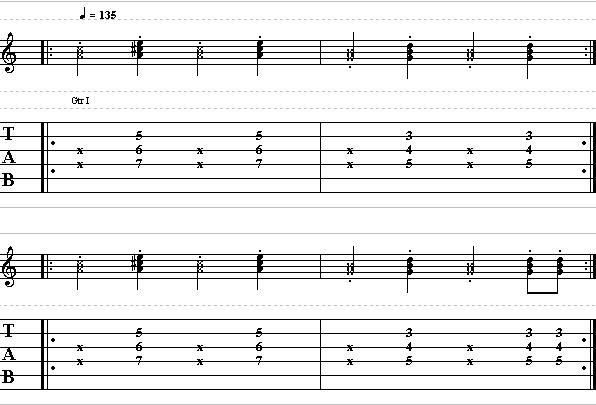Hey guys!
In this guitar lesson, Jon MacLennan will teach you a basic chord progression for you to practice
with an easy strumming pattern, hope you like it!!!
watch the video and please like us and comment on youtube
Also do me a favor and subscribe to our Youtube channel
Hey, how’s it going everybody?
My name is John McClennan and I’m
here today with guitarcontrol.com,
bringing you some awesome video blogs,
video lessons. Today we’re looking at
just going through a simple chord
progression that, again, is one of
the most common chord progressions
in pop music. We’re just adding a
nice strumming pattern to it, kind
of a rock strumming pattern.
So let’s jump right in.
The chords that we’re looking at are
G, D, E minor and C. And what we’re
going to do is we’re going to play
on the first beat like this, one.
And then we’re going to play eighth
notes all through the rest of the
measures. So that’s going to sound
like this: one-and, two-and, three-and,
four-and; one-and, two-and, three-and,
four-and. Again, I always tap my foot.
If you’re tapping your foot you’re going
to tap those strong beats like this: one,
two, three, four. So realize that your
pick goes right with your foot. Just do
that real quick. One, two, three, four.
And realize that connection between the
pulse, tapping of your foot, and also
your strumming.
You’re going to play on the first beat.
One. And then you’re going to play two-and.
And what’s going to happen is you’re going
to play when your foot goes down and then
you’re also going to play when it comes up
as well.
For this exercise, basically what we’re
doing is we’re doing all downstrokes.
This is going to sound like this.
One, two-and, three-and, four-and;
one, two-and, three-and, four-and.
Another way of thinking about it is
the first one is a little longer and
then all the rest are those eighth
notes, shorter beats. Just try that
with me, staying on a G flat.
I always count along, too, with the
music when you’re first learning a
new pattern. It’s one of the keys.
You’ve got to do it. Counting a
pattern helps you internalize it
and know where everything is within
that beat or within that subdivision
or however you’re counting it.
Now what we’re going to do is take
that pattern and apply it through
all the chords. Again, G, D, E minor, C.
Here we go. Try it with me. One, two,
three, four. One more time.
All right, thanks so much for watching.
Again, be sure to click the link below
for the tabs and all the chord voicings
that you’re going to need and we’ll catch
you in the next video.



